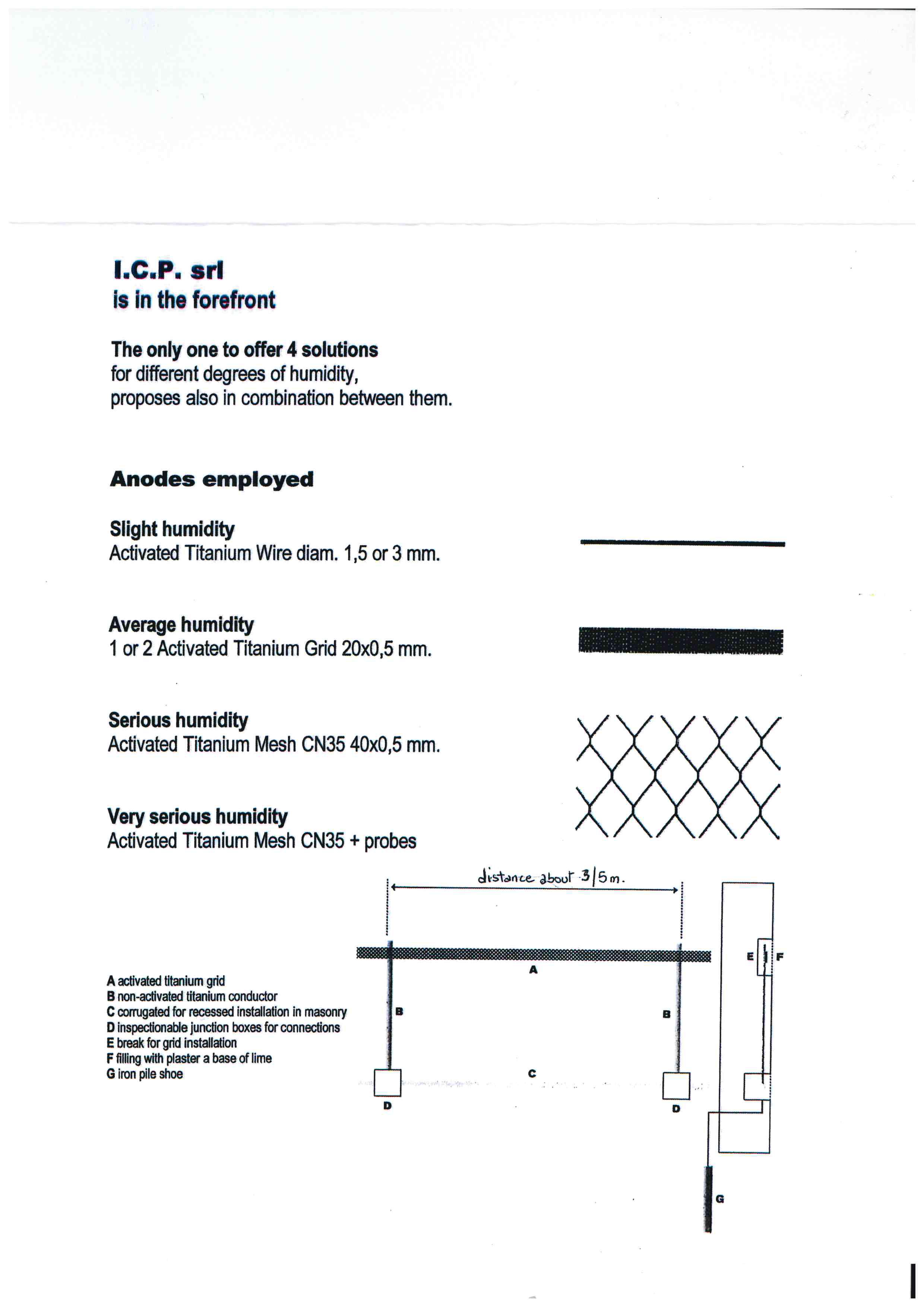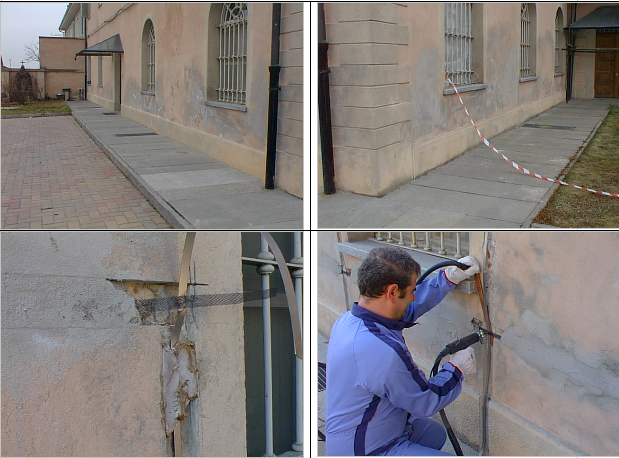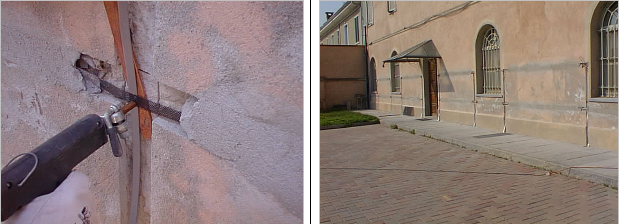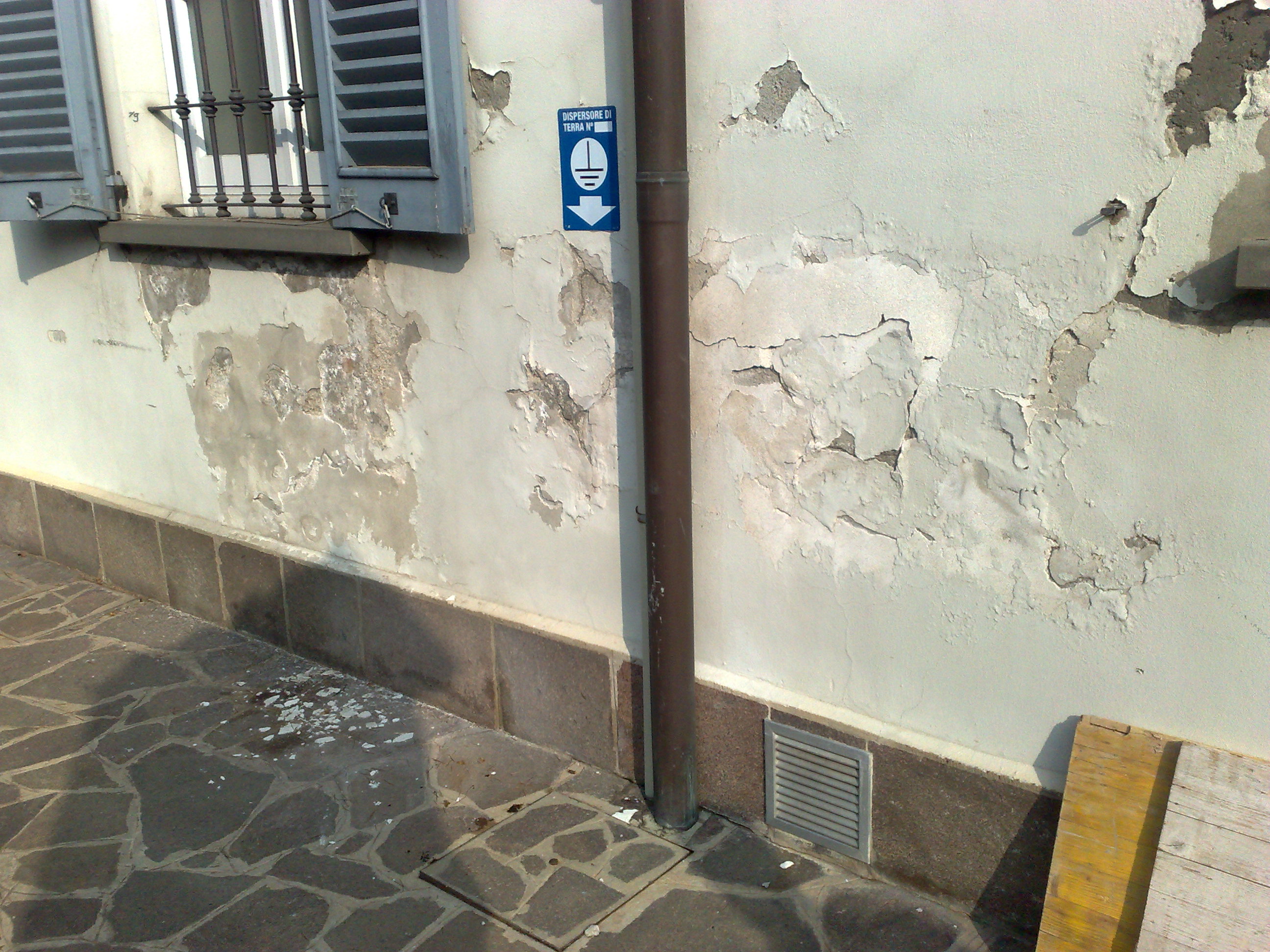Dehumidification of walls
The humidity inside the homes is a major problem, to be seriously treated if you want to avoid that with time it will create harmful degradation.
The causes are many: infiltration, condensation, upward humidity, and so on.
Undoubtedly the most insidious and difficult to eliminate the upward humidity, because of the physical characteristic of the phenomenon, it affects the entire thickness of the material and, if underestimated, leading to premature wear and tear of the plaster and of the wall structure.
Humid environments, as well as producing unsightly mold, make the air unhealthy and smelly, they are also often the cause of allergies and diseases of the joints, respiratory etc.
Historical origins of electroosmosis
In 1809 F.Reuss studying the electrophoresis, discovered the consequent electroosmosis.
After nearly 50 years of experiments, in 1860 Quincke, formulated the theoretical model, following the research of Faraday. Helmotz was finally sensed that the mechanism and the quantification of the electrical double layer, which explains all the phenomena of electrokinetics (electrophoresis, electrosmosis, the flow potential, sedimentation potential).
The electrokinetics is a well-known principle in physics: studying the movement and interaction of the transport of liquids, such as the convention generated by the electroosmotic flow and the hydraulic gradient applied, and the migration of anions and cations to the respective electrode. The electroosmosis has been used for a long time in the field chemical-pharmaceutical, industrial, food, etc..
It is an event resulting from the electrokinetics: the compounds present in the solid state remains unchanged, while those liquids migrate; using a modest electric current (continuous low voltage) increases the pressure, thus creating an electroosmotic barrier to upward humidity that forces the water to reach the negative pole to the ground.
The eco-system is environmentally friendly, is biocompatible and does not pollute, because it uses a weak continuous current that generates no electromagnetic fields.
The previous solutions for dehumidifying
Mechanical Systems
The principle involves an horizontal cut to the entire width of the wall, with the inclusion of a layer of waterproof material, in order to stop the rising moisture.
Absorption systems
Consist in the realization of some cavity in the wall in which to place small ceramic tubes, having the purpose of absorption and ventilation.
Injection systems
Through holes in the wall are injected, at high-pressure, water-repellent resins and other chemicals, in an attempt to create a waterproof barrier, with which stop the rising moisture.
Traditional techniques
Crawlspaces, plaster renovation, cover the wet part with beole, chemicals in the plaster or in the painting; solutions that at medium/short term reveal the presence of moisture thwarting the effort.
The merits of the electroosmotic system
The electroosmotic system does not require special work in the wall structure, so as to allow a considerable reduction in costs.
The electroosmotic system is effective for any kind of structure: exterior walls, interior and walls.
The electroosmotic system does not require the use of chemicals, synthetic and not natural substances. The electroosmotic system ensures in the years the perfect dehumidification of the walls, the maintenance of the new plaster and paintings.
The electroosmotic system determines the improving air quality in the environment.
The electroosmotic system provides a minimum power consumption.
The electroosmotic system is now imposed by years both for the extreme effectiveness that for the undisputed economic convenience.
The only caveat is the presence of metal structures inside the walls treated; in which case you will need to isolate themselves with plastic.
Employed materials
In the field of active electroosmosis, I.C.P. srl uses Titanium Activated material with a layer of noble metal oxides MMO. The electro-welded grafts, durable and stable over time (over 30 years) together with the impressed current, solve permanently the problem of the upward humidity from the ground to the walls of the buildings and the surrounding floor.
I.C.P. srl intervenes with the choices most appropriate according to the type and degree of moisture present.
Inspectionable system
Our unique system allows the verification of all sectors of the system: through the junction boxes can check the connections anode-cathode and the pile shoes on the floor, without having to tear down the plaster.
Immediately plaster
After mounting the system, will be no longer necessary, as was the case for older plants, wait more than three months to perform the plaster; you can apply immediately, since the system will be able in a short time to dry the plaster at the same time to walls
Invisible system
The system is non-invasive, invisible, it is applied under plaster or, in case of at sight masonry, inside the sconnessure.
By means of a processor the control unit modulates and controls autonomously the performance of drying and the amount of energy to be used, until the maintenance regimen (visible values).
The system is covered by insurance for civil liability.
The system is guaranteed for 24 months, for its proper functioning.
The problem of the salts
With our system, the need for a desalting treatment of the walls occurs only in very rare cases: eliminating moisture, the salts contained in the walls are generally neutralized.
This results is a significant savings cost because, once the process is completed, with the walls back in the water balance, will surface only a white powder that must be simply brushed off. You can then proceed with painting.



